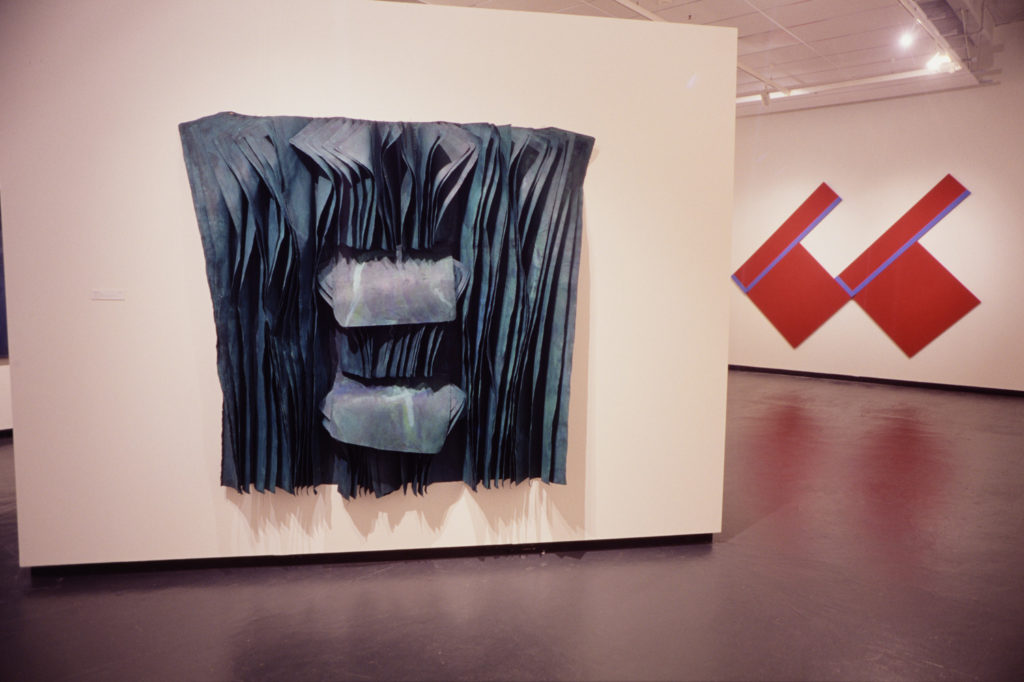CURATOR Justin Paton ORGANISER Robert McDougall Art Gallery, Christchurch OTHER VENUES Robert McDougall Art Gallery, 20 November 1996–2 February 1997; Auckland Art Gallery, 28 February–20 April 1997; Manawatu Art Gallery, Palmerston North, 16 May–13 July 1997 PUBLICATION essay Justin Paton
It’s its own thing, it isn’t about anything, it is itself.
—Don Peebles, describing his Untitled A2 (1984)
Don Peebles is a pioneer of New Zealand abstract painting. The Harmony of Opposites is his first proper retrospective since the Dowse Art Gallery's big touring show in 1973. It spans fifty years of work, as Peebles moves from gestural painterly abstraction through hard-edged constructivism to his signature works—his canvas reliefs.
Peebles has his first formal art training in Florence after the war, while waiting to be demobilised. He continues his study in Wellington in the late 1940s and in Sydney, at the Julian Ashton School of Art under John Passmore, in the early 1950s. Peebles’s encounters with modernism prove formative.
Matisse’s and Cezanne’s influences can be seen in Peebles’s early landscapes, such as The Little Beach (1947) and Landscape (1954), demonstrating his shift from naturalism to gestural abstraction. In 1954, Peebles’s first solo show in Wellington is some of the first abstract art by a New Zealand painter to be seen in the capital.
In 1960, Peebles wins an Association of New Zealand Art Societies scholarship to study in London. There, he meets constructivist painter Victor Pasmore, who becomes a friend and a major influence. Returning to New Zealand, Peebles makes Pasmoresque constructed relief paintings, grid paintings, and shaped paintings.
In the late 1970s, Peebles begins to make relief paintings using paint-stained, unstretched canvas, exploiting the way the canvas hangs according to its natural inclination. As he notes, when describing the mural-scaled example Untitled (1978), the largest work in the show: ‘I want this flow and ripple, and the consequent cast shadow when the light hits it, to be an inherent part of the whole image.’
His later canvas reliefs combine literal and depicted forms—the logics of sculpture and painting.
Curator Justin Paton emphasises Peebles’s process by including studies on paper and workbooks. In the Dominion Post, Mark Amery says the show gives ‘a sense that Peebles’ work has come full circle, from the representation to the presentation of nature’.









































